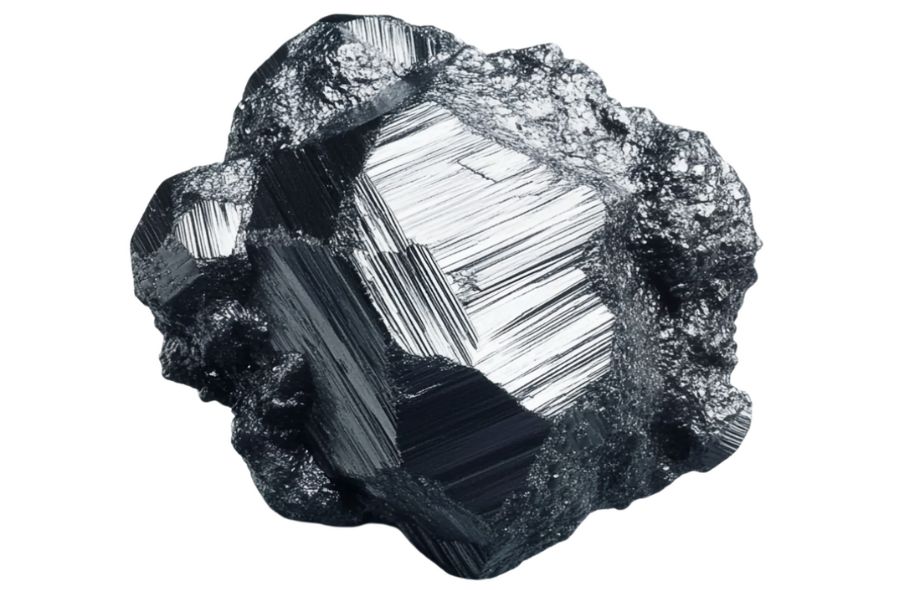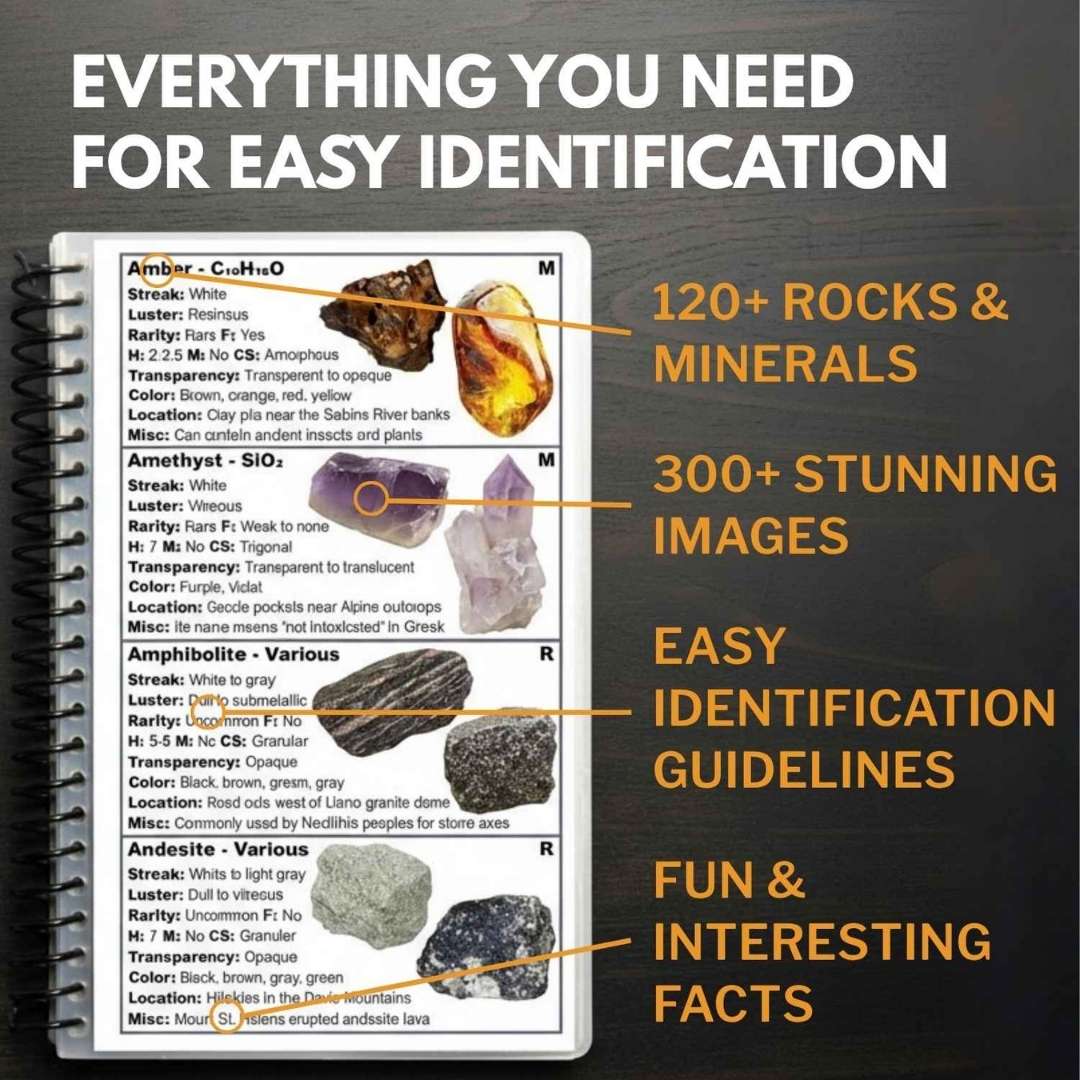Texas has plenty of hidden gems, and platinum is one of them. This rare metal sits quietly in various spots across the state, waiting for keen eyes to find it.
Many folks don’t know that Texas soil can hold platinum. Yet, some rivers, creeks, and old mining areas have shown traces of this valuable metal over the years. You just need to know where to look.
This guide will take you through the best Texas locations for platinum hunting. We’ll cover the basics of what to bring, when to go, and how to spot the real thing from the fakes. Whether you’re a weekend hobbyist or a serious prospector, there’s something here for you.
We’ll give you everything you need to start your search, but you’ll want one more crucial item: Rock Chasing’s Texas Rocks & Minerals Identification Field Guide.
Without a great reference like this, you run the risk of walking right over a valuable specimen simply because you couldn’t identify it. This guide will save you countless hours of guesswork.
How Platinum Forms Here
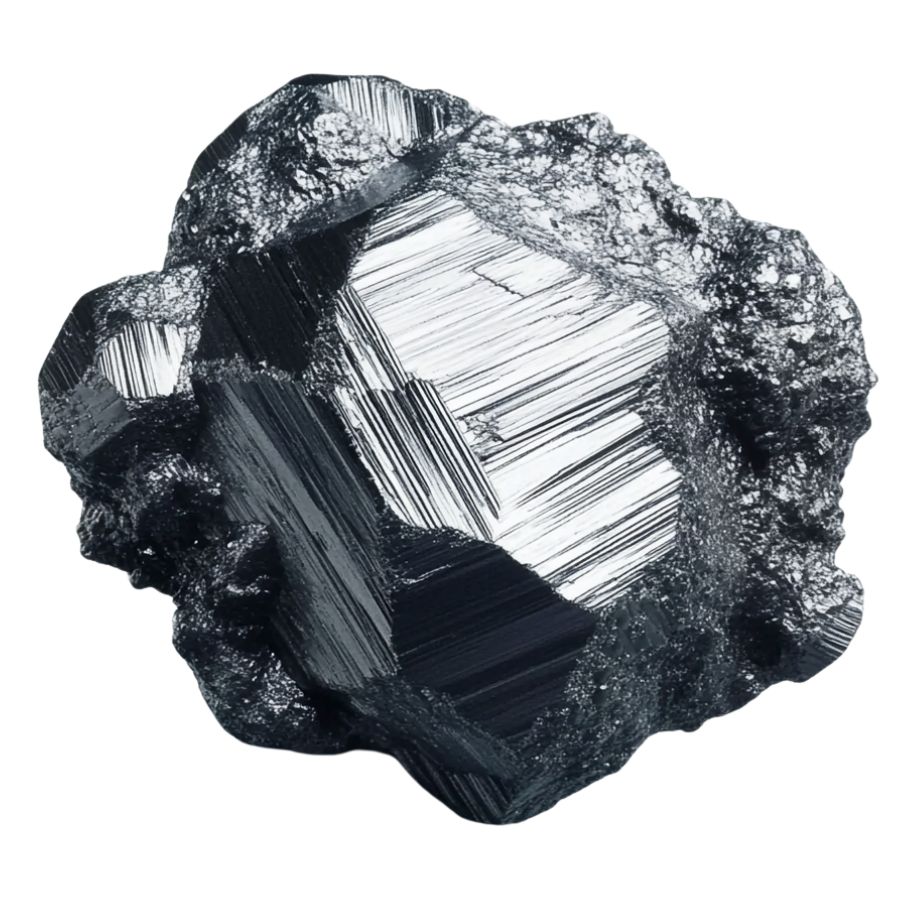
Platinum forms deep within Earth’s mantle, about 90-125 miles below the surface. This precious metal starts its journey when molten rock cools very slowly under extreme pressure.
Unlike gold, platinum rarely forms large nuggets. Instead, it typically appears as tiny grains mixed with other rocks. When ancient volcanoes erupt, they sometimes bring platinum-bearing rocks closer to the surface.
Over millions of years, weathering breaks down these rocks, and the heavy platinum particles get washed into streams and riverbeds.
Most platinum comes from places where parts of the mantle pushed up through the crust long ago. Miners often find platinum alongside nickel and copper deposits in igneous rocks.
Some platinum forms when meteor impacts create the perfect temperature and pressure conditions for these rare metals to crystallize.
Platinum Host Rocks
Platinum is a rare and valuable metal that occurs naturally in certain geological formations. These formations, often ultramafic and mafic igneous rocks, are significant hosts for platinum mineralization. Below is an overview of ten such rock types and geological settings associated with platinum deposits:
Peridotite
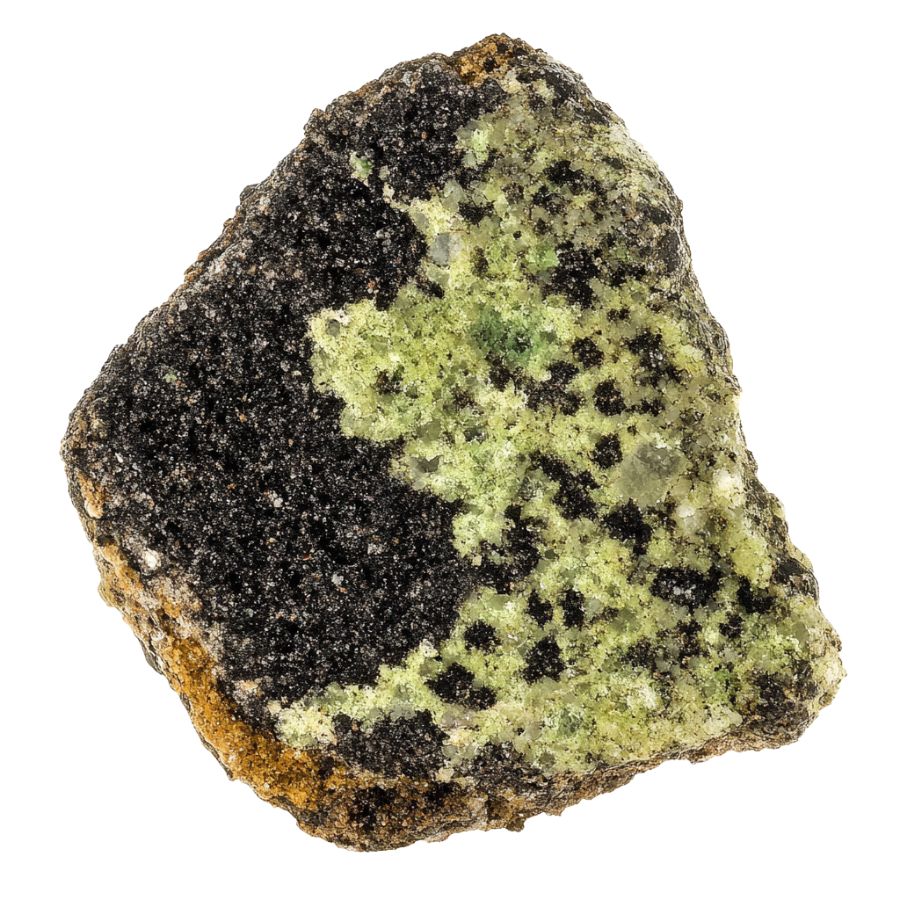
Peridotite is a green igneous rock that forms deep within the Earth’s mantle. Its striking color comes from its main mineral, olivine, with black specks from minerals like chromite or magnetite adding contrast. Unlike other similar rocks, peridotite contains less than 45% silica.
This special rock serves as a natural home for platinum. The precious metal hides inside peridotite as tiny grains, sometimes too small to see without a microscope.
Platinum in peridotite often teams up with other valuable metals like palladium, rhodium, and iridium. Miners search for areas where natural processes have concentrated these platinum grains into richer deposits.
When you see platinum jewelry, there’s a good chance the metal originally came from peridotite deep beneath the Earth’s surface.
Dunite
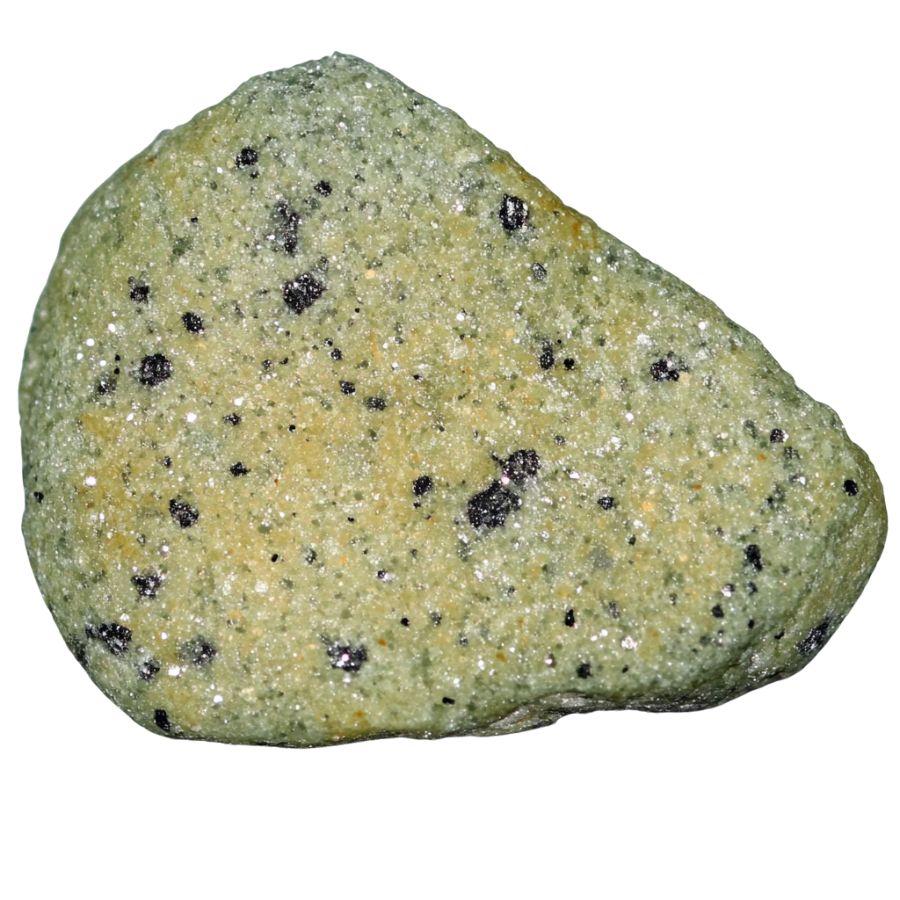
Dunite is an olive-green to yellowish-green rock with a speckled appearance. It has a coarse texture where you can see individual mineral grains. Unlike other similar rocks, dunite consists of more than 90% olivine, giving it a more uniform green color than peridotite or harzburgite.
Platinum loves to hide in dunite rocks, especially in areas with lots of chromite minerals. The platinum in dunite often appears as tiny metal flakes or as minerals mixed with arsenic compounds.
Over millions of years, as the magma cools and crystals grow, platinum gets caught between the olivine minerals. Some of the world’s most valuable platinum comes from dunite that formed over a billion years ago.
If you want REAL results finding incredible rocks and minerals in Texas you need one of these 👇👇👇
Finding the coolest rocks in Texas isn’t luck, it's knowing what to look for. Thousands of your fellow rock hunters are already carrying Rock Chasing field guides. Maybe it's time you joined the community.
Lightweight, mud-proof, and packed with clear photos, it’s become the go-to tool for anyone interested discovering what’s hidden under our red dirt.
Join them, and make your next rockhounding trip actually pay off.
📘 Order the Texas Field Guide Now →
What makes it different:
🚙 Field-tested across Texas rivers, ranchlands, and roadcuts.
📘 Heavy duty laminated pages resist dust, sweat, and water.
🧠 Zero fluff — just clear visuals and straight-to-the-point info.
📍 Find hidden gems like Blue Topaz, Texas agate, and petrified wood fast.
⭐ Rated 4.8★ by real collectors who actually use it in the field.
Harzburgite

Harzburgite displays a dark green to greenish-black color with a speckled appearance. It features olive-green olivine crystals mixed with darker orthopyroxene minerals. Unlike dunite, harzburgite contains significant amounts of orthopyroxene alongside olivine but has less clinopyroxene than other peridotite varieties.
The platinum in harzburgite tells an interesting story about Earth’s inner workings. This rock forms through a process called partial melting, which concentrates platinum in the remaining solid material.
As magma bubbles up through Earth’s mantle, harzburgite acts like a natural filter, sometimes collecting platinum along with other rare metals. Platinum hunters look for harzburgite that contains tiny sulfide minerals, as these often hold the precious metal.
The platinum in harzburgite is especially valuable because it forms under extreme conditions that are hard to reproduce in laboratories, making each deposit unique.
Pyroxenite
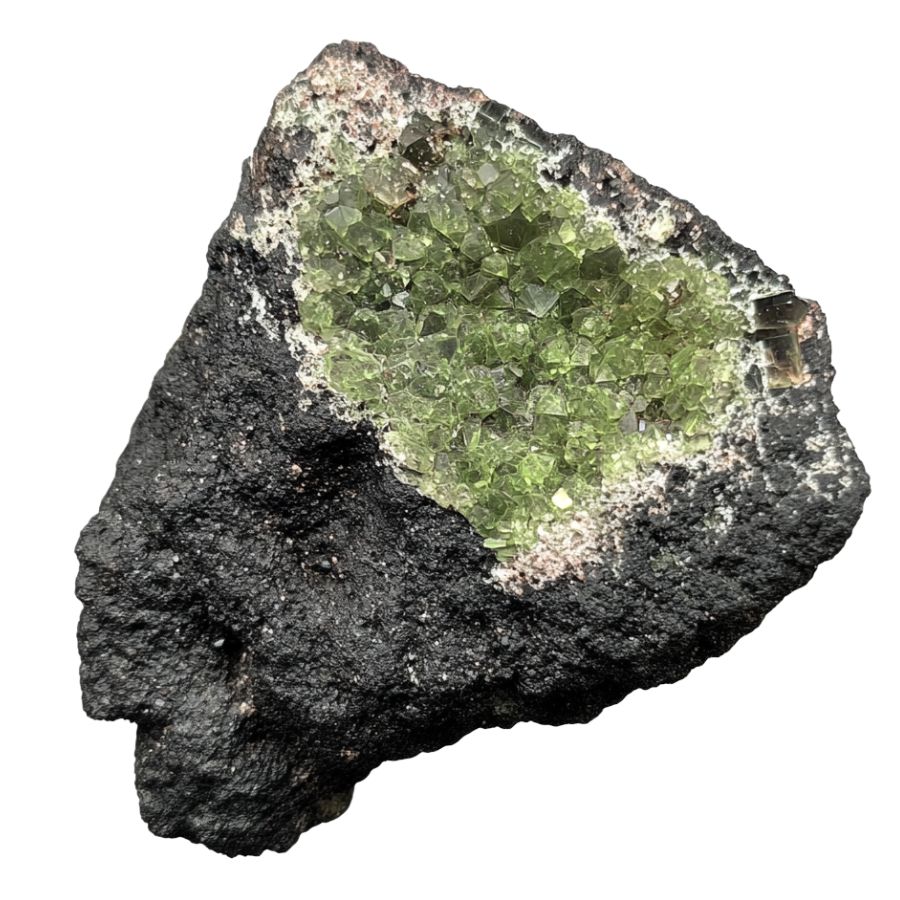
Pyroxenite comes in dark green, black, or light green colors with layered, banded, or veined patterns throughout the rock. It has a range of luster from dull to vitreous or even slightly metallic. Unlike peridotite varieties, pyroxenite contains mostly pyroxene minerals like augite and diopside, with little to no olivine.
Platinum finds a perfect home in pyroxenite rocks, often forming rich deposits that miners treasure. The special mineral makeup of pyroxenite creates ideal conditions for platinum to concentrate, especially along layer boundaries where different minerals meet.
When magma slowly cools to form pyroxenite, platinum particles get trapped in growing crystals or settle between layers. Sometimes, the platinum in pyroxenite appears as its own minerals like sperrylite, which contains platinum and arsenic. Other times, it hides inside sulfide minerals alongside copper and nickel.
Geologists use sophisticated tools to find these platinum-rich zones in pyroxenite, looking for subtle clues that indicate where the precious metal might be hiding.
Norite

Norite is a dark gray to greenish-black rock with visible salt-and-pepper speckles. These speckles come from the light-colored plagioclase feldspar mixed with dark orthopyroxene minerals. The rock has a coarse texture where you can see individual crystals without a magnifying glass.
Platinum in norite typically appears alongside other valuable metals, creating treasure troves beneath the surface. Unlike in some other rocks, platinum in norite often forms during the cooling of magma chambers, when the metal concentrates in specific layers as the liquid rock solidifies.
The platinum minerals in norite can take various forms – sometimes as pure metal flakes, sometimes as compounds with sulfur or other elements. These differences affect how miners extract the platinum and how much the deposit is worth.
Gabbro
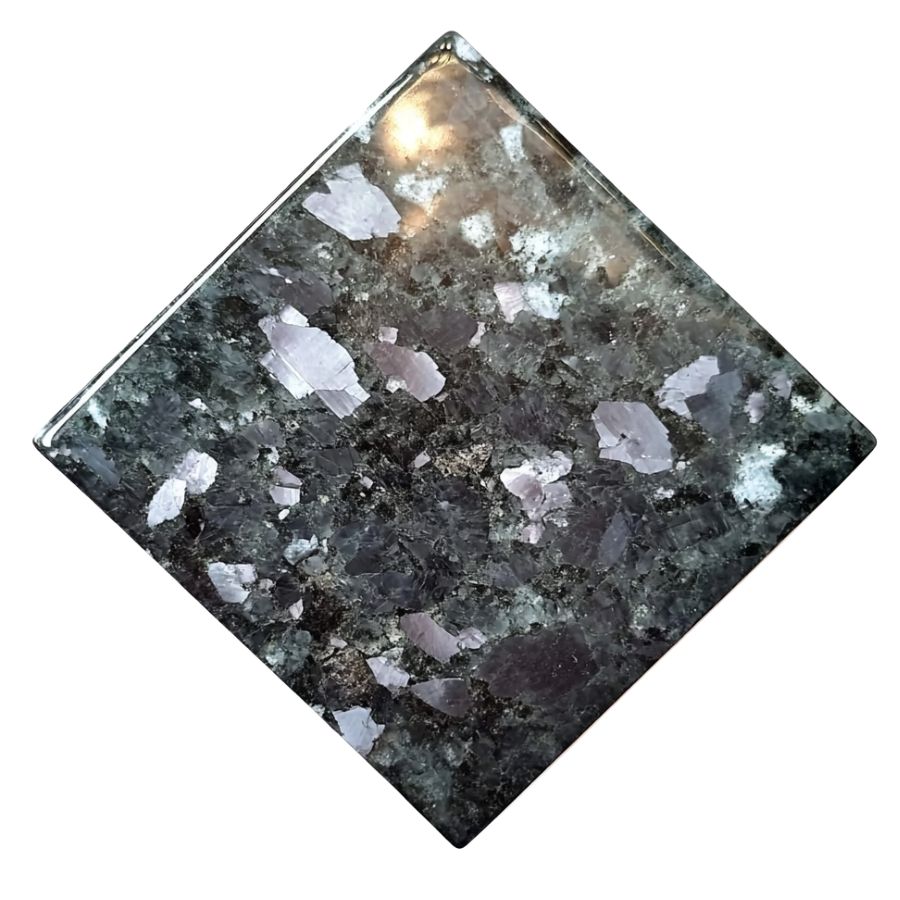
Gabbro is a dark-colored rock with visible crystals of white to gray feldspar mixed with black or dark green minerals. Its coarse texture comes from slow cooling deep underground, letting the crystals grow large enough to see easily. Unlike granite, which is light-colored with lots of quartz, gabbro is much darker and heavier.
When platinum appears in gabbro, it often creates some of the most valuable metal deposits on Earth. The platinum doesn’t spread evenly through the rock, instead, it concentrates in special zones that formed as the magma cooled and different minerals crystallized. These zones sometimes look like layers or bands running through the gabbro.
The platinum in gabbro usually teams up with metals like palladium, creating a natural alloy. Sometimes, it forms its own minerals with sulfur or arsenic. Because gabbro is so tough and resistant to weathering, mining platinum from it can be challenging but very rewarding.
Anorthosite
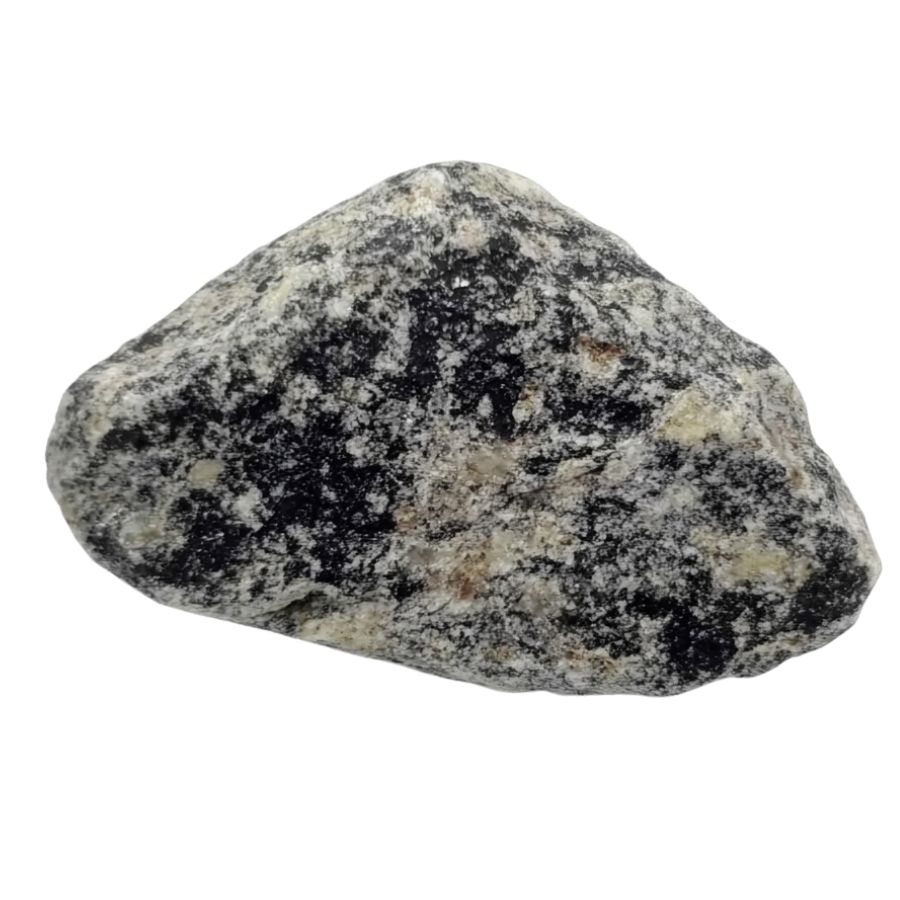
Anorthosite is a light-colored rock, usually white to light gray. Unlike most igneous rocks that contain various minerals, anorthosite is made up of more than 90% plagioclase feldspar, with very few dark minerals. This gives it a much lighter appearance than similar rocks like gabbro or norite.
The platinum in anorthosite systems often appears with copper and nickel minerals, forming complex patterns that geologists work hard to understand.
When studying anorthosite for platinum potential, scientists look for subtle color changes or mineral differences that might signal the presence of the valuable metal. The contrast between light anorthosite and the darker minerals that sometimes contain platinum makes these deposits particularly interesting.
Chromitite
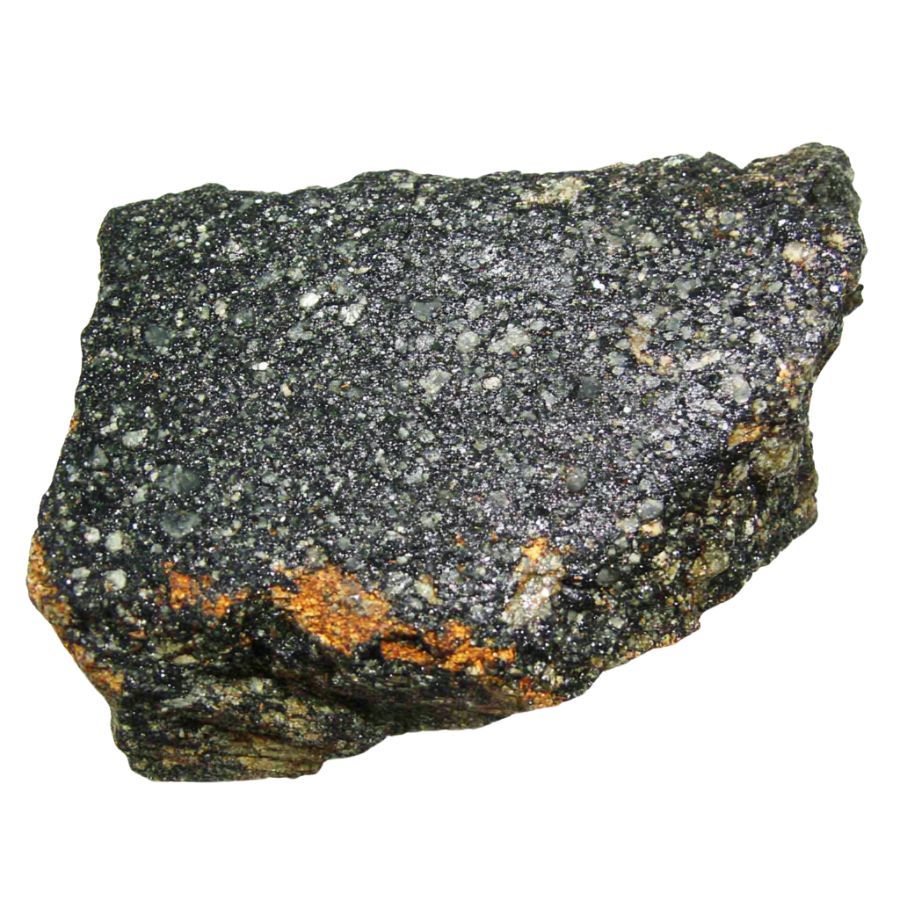
Chromitite is a dark, almost black mineral with a metallic to slightly greasy shine. When you look at it closely, it might have dark gray or brown-black tones. Unlike similar-looking minerals, chromitite forms in distinct masses or layers within certain rock types, especially in rocks related to ancient volcanoes.
Platinum in chromitite often appears as tiny grains nestled between the chromite crystals or as microscopic particles inside the crystals themselves. When geologists find thick layers of chromitite, they get excited about the platinum potential.
The relationship between chromium and platinum remains somewhat mysterious, but we know that the same geological processes that concentrate chromium often gather platinum too.
Some chromitite layers contain so much platinum that even though the metal is invisible to the naked eye, these rocks become some of the most valuable materials on Earth.
What Does Rough Platinum Look Like?
When found in the wild, rough platinum has distinctive qualities that separate it from other similar-looking minerals. Here’s how to spot it even if you’re not a rock expert.
Check for a Silvery-Gray or Steel Color
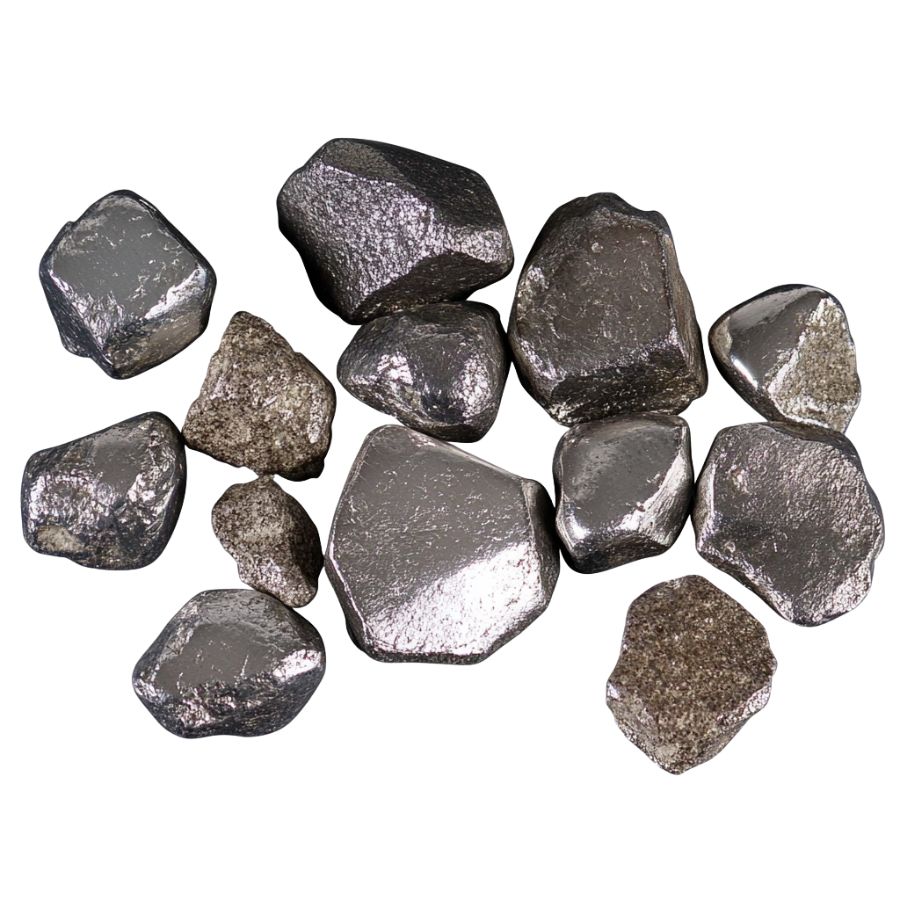
Raw platinum usually has a silvery-gray or steel-like appearance with a dull metallic luster. Unlike silver, it won’t tarnish or develop a blackened surface over time. It also lacks the brassy or yellowish tone of minerals like pyrite (fool’s gold).
Sometimes, native platinum may appear slightly darker due to natural coatings or mineral impurities. If you gently scratch the surface, you might expose a brighter metallic streak underneath — a good sign you’re on the right track.
Also, it won’t show rainbow flashes or colorful reflections like some other shiny minerals.
Look for Rounded, Worn Nugget Shapes
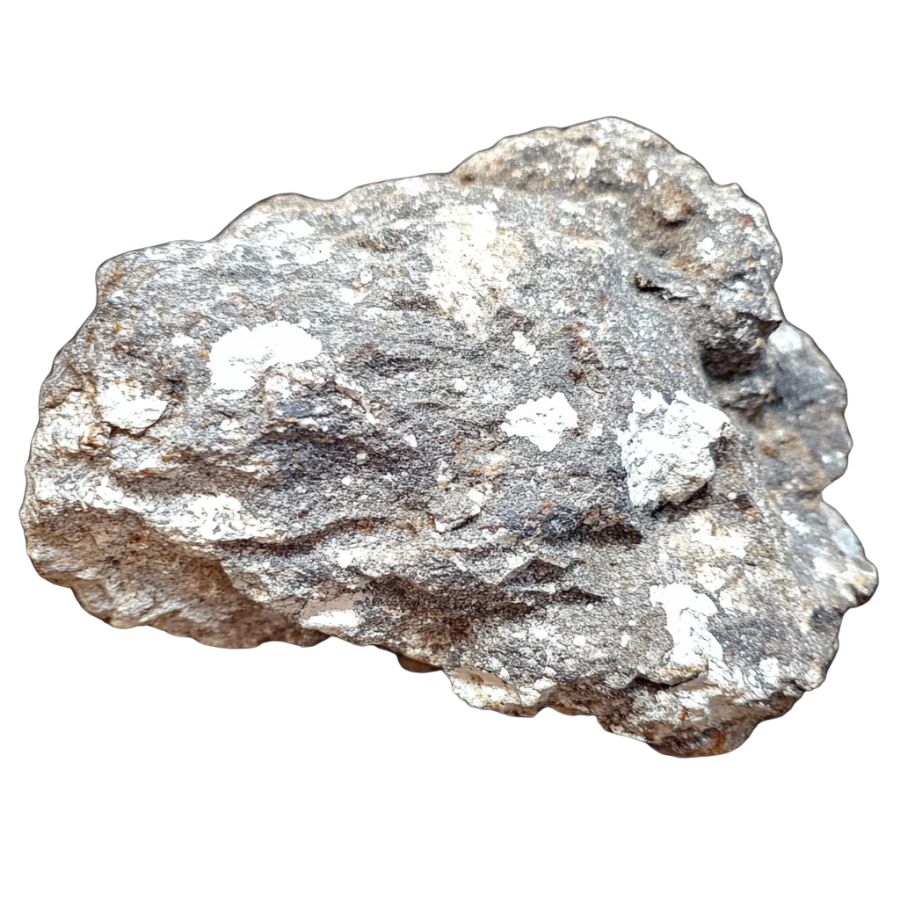
In nature, platinum typically appears as small nuggets, grains, or flattened flakes. These pieces often have smooth, rounded edges, especially if they’ve been tumbled in a stream or river. They can look a bit like dull silver pebbles — dense, worn, and irregular.
Crystalline platinum is extremely rare, so don’t expect sharp edges or well-defined shapes. Instead, look for odd but smoothed forms, like tiny clustered balls or slightly squished flakes.
Test the Surprising Heaviness

If you pick up a small piece and it feels unusually heavy for its size, that’s a strong clue. It’s denser than silver, lead, and even gold, giving it a distinct heft in your hand.
While it’s only slightly heavier than gold, it’s noticeably denser than most rocks or minerals you’ll come across. That weight, combined with color and shape, makes rough platinum easier to spot once you know what to look for.
What About Platinum Ore?
Platinum is often found in ore rather than as pure nuggets, especially in hard rock deposits. These ores usually come from ultramafic or mafic igneous rocks like peridotite, dunite, or chromitite. The rock might look dark, heavy, and unremarkable — but can contain microscopic grains of platinum group metals.
Visually, platinum ore doesn’t usually stand out. It’s often associated with other metals like nickel, copper, and iron, and may have a greenish or dark gray color with metallic flecks.
Professional identification usually requires assay testing or specialized tools — so if you’re near a known deposit and find unusually heavy, dark rock with metallic grains, it could be worth having it checked.
The Tools You Will Need
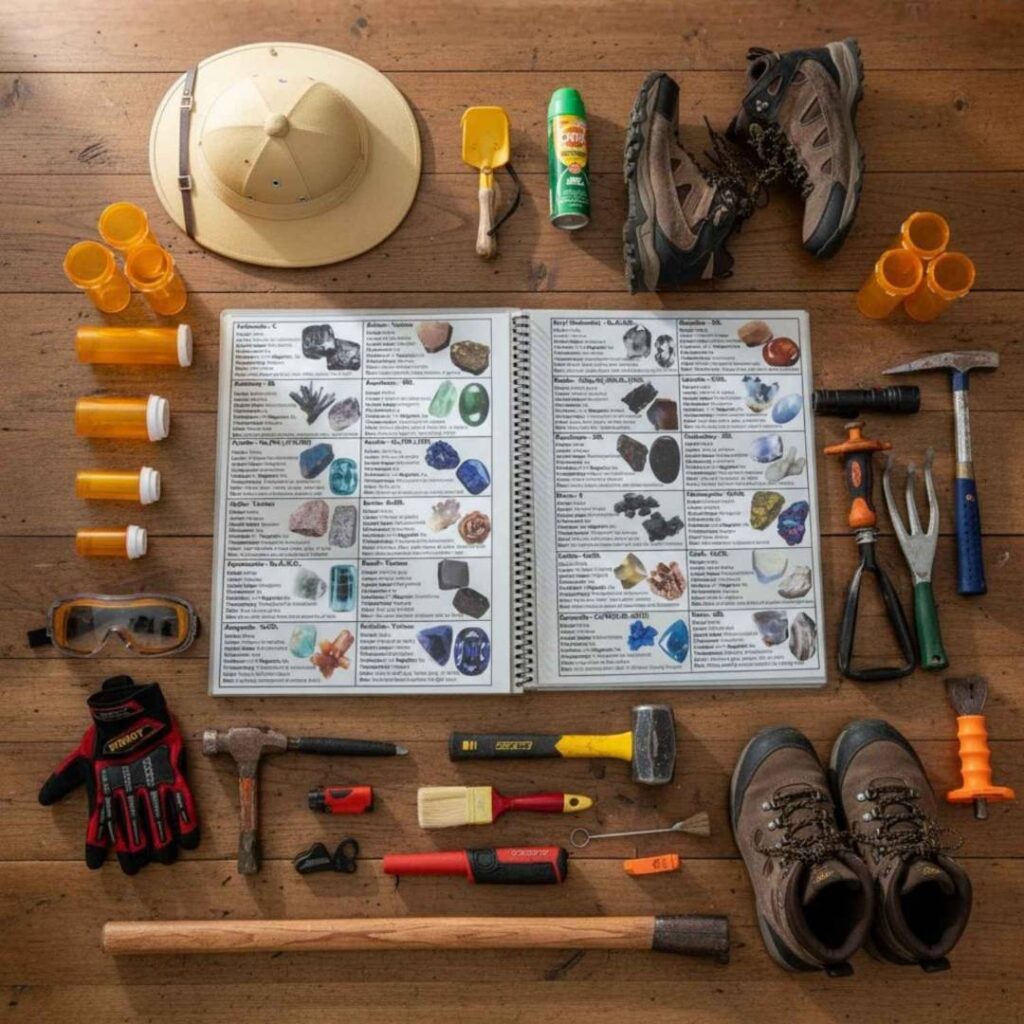
Platinum is rare in Texas, but it’s not impossible to find. It tends to settle in heavy gravel near old waterways and eroded rock formations. With the right tools, you can separate what’s worth keeping from what’s just ordinary sediment and make the search practical instead of frustrating.
A Reliable Field Identification Guide – Essential
Rock Chasing’s Texas Rocks & Minerals Identification Field Guide makes identifying more than 120 Texas rocks, crystals, and minerals fast and simple.
It’s compact, easy to read, and skips the fluff found in heavier textbooks. Laminated pages and spiral binding make it tough enough for riverbanks, quarries, and long days outdoors.
With 300+ full-color photos, it’s easy to confirm finds like quartz, blue topaz, and geodes on the spot. Built for real use, it’s a dependable companion for any Texas rockhound or collector.
You can see HERE why it’s so trusted among countless Texas rockhounds.
Gold Pan – Essential
A simple gold pan is one of the best tools for spotting platinum. The process is the same as gold panning, washing away lighter material until only heavy minerals remain. Platinum settles at the bottom, often beside small flakes of gold or black sand.
Magnet – Recommended
A magnet is a quick way to eliminate lookalike minerals. Platinum isn’t magnetic, so if a rock sticks to the magnet, you can move on. It saves time and keeps your search focused on real prospects.
Shovel or Hand Trowel – Recommended
When you’re working in streambeds or loose gravel, a small shovel or trowel helps reach the layers where heavy metals collect. It’s light enough to carry but sturdy enough to dig into packed sediment.
Vial or Sample Container – Optional
Once you find small metal flakes or nuggets, you’ll need a safe place to keep them. Small vials or sturdy containers protect your finds and make it easy to compare samples later. Label each one so you remember exactly where your discoveries came from.
Tips on Where to Look
Platinum is rare but not impossible to find. Here are some spots where you might get lucky with your search.
Placer Deposits
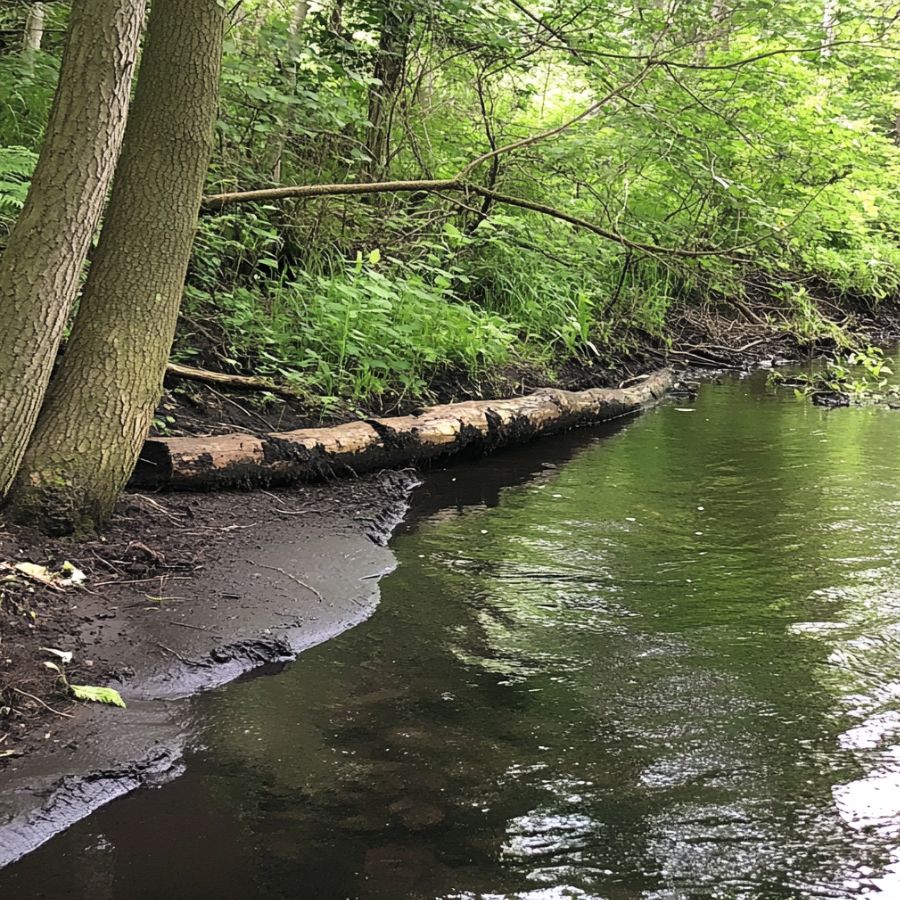
Check out streams and rivers. Platinum is heavy and sinks to the bottom of moving water. You’ll want to grab your pan and look in the same spots where you’d search for gold.
Focus on the bends of rivers where water slows down and heavier metals drop. The black sand areas are your best bet, and that’s where platinum particles often hide.
Sometimes, after a heavy rainfall washes away lighter materials, you might find platinum nuggets or flakes mixed in with other dense minerals that have been collecting there for thousands of years.
Ultramafic Rocks
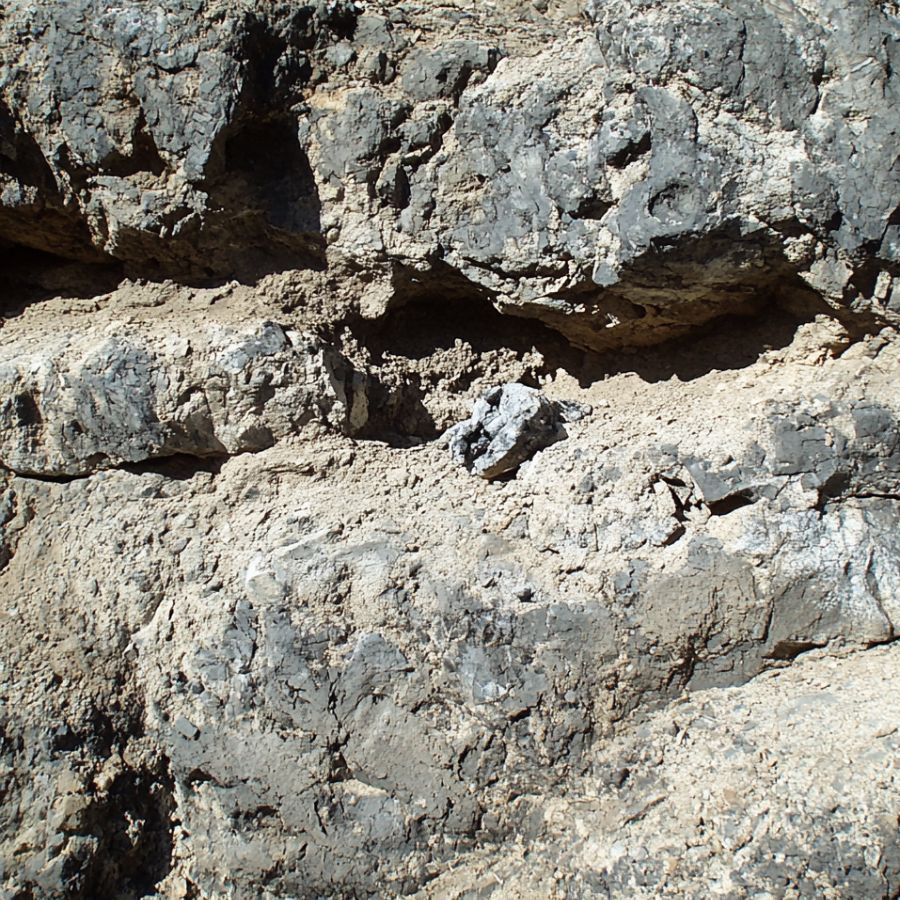
Hunt around dark-colored rocks. Ultramafic rocks like serpentinite, which often have a greasy green look and feel, sometimes contain platinum. These rocks form from the Earth’s mantle and get pushed up to the surface.
Break open some samples and look for metallic specks. If you spot chromite (black, metallic mineral) in these rocks, that’s a good sign because platinum likes to hang out with chromite.
Old Mine Tailings
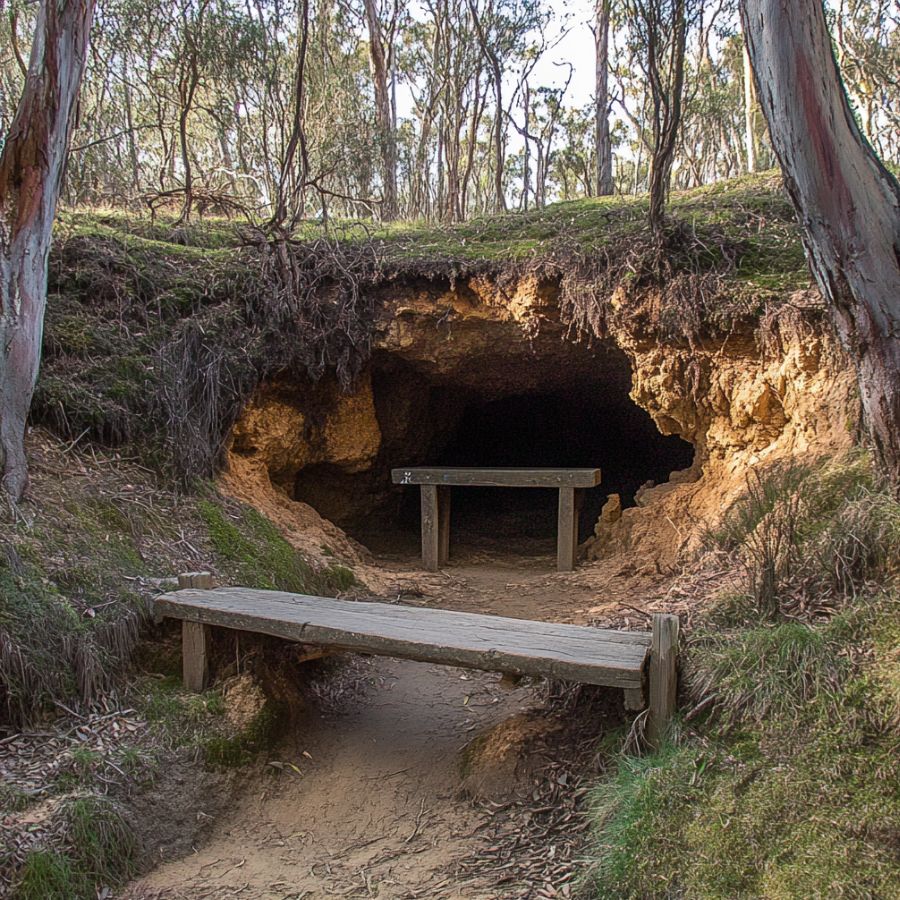
Don’t ignore old mining areas. The miners from back in the day missed stuff. Their old tailings (the leftover rock piles) might contain platinum they didn’t recognize or couldn’t extract with their tech.
Bring a metal detector that can pick up platinum – it responds differently than gold. Sift through these piles carefully, especially if the mine was known for nickel or copper, as platinum often shows up with these metals.
Weathered Outcrops
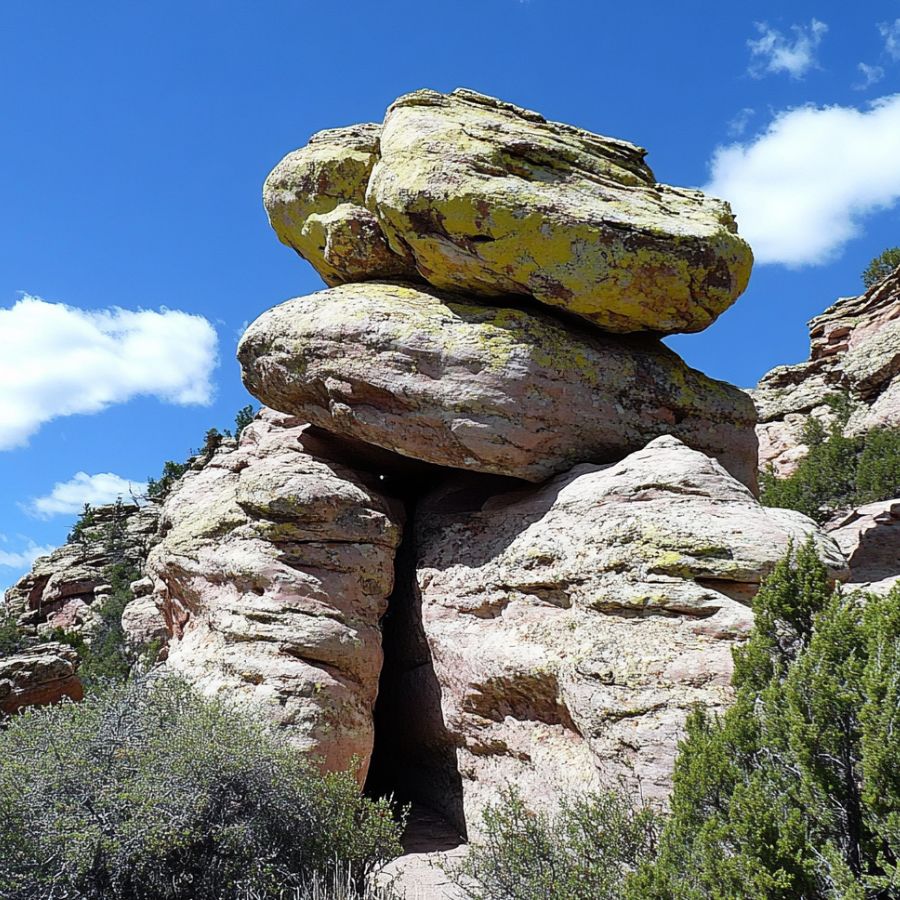
Explore weathered rock outcrops. When rocks break down from weather, heavier minerals like platinum concentrate near the bottom of slopes.
Look for rusty-colored areas where iron has oxidized because platinum sometimes exists alongside these iron-rich zones.
Some Great Places To Start
Here are some of the better places in the state to start looking for Platinum:
Always Confirm Access and Collection Rules!
Before heading out to any of the locations on our list you need to confirm access requirements and collection rules for both public and private locations directly with the location. We haven’t personally verified every location and the access requirements and collection rules often change without notice.
Many of the locations we mention will not allow collecting but are still great places for those who love to find beautiful rocks and minerals in the wild without keeping them. We also can’t guarantee you will find anything in these locations since they are constantly changing.
Always get updated information directly from the source ahead of time to ensure responsible rockhounding. If you want even more current options it’s always a good idea to contact local rock and mineral clubs and groups
Llano Uplift

The Llano Uplift is a large dome-shaped area in central Texas, mainly in Llano County. It measures about 90 miles across and stands out because of its very old rocks.
What makes this place special is its exposed Precambrian rocks that are over 1.5 billion years old. These ancient formations create a unique “island” of old rocks surrounded by younger rock layers. Famous granite domes like Enchanted Rock add to the area’s geological importance.
Focus on areas with exposed Precambrian rocks, which extend about 65 miles west from the Colorado River valley. Many fault lines cut through these rocks and often contain concentrated minerals.
The central part of the uplift, where the Llano River flows, also offers good hunting grounds for mineral enthusiasts.
Visiting during spring or fall provides the most comfortable temperatures for exploring this mineral-rich landscape.
You've probably walked past some incredible rocks and minerals. You need this guide 👇👇👇
We've all come across a cool rock that we could have sworn was rare or valuable but couldn't tell what it was.
If you're not 100% confident that you know every rock and mineral in Texas this guide is for you.
The Texas Rocks & Minerals Field Guide helps you ID what you find in seconds, from Hill Country agates to Llano granite, with crisp photos, simple charts, and zero fluff.
→ Grab your copy today and spot your next gem before anyone else does.
What this guide unlocks:
🧭 Confidence in the field — ID rocks fast and move on to the next find
🎒 Lightweight and waterproof — built for trails, not coffee tables
🌅 Weekend adventures — find treasures on rivers, ranches, and roadsides
🤠 Texas pride — explore the real geological beauty of your state
🔥 Motivation — every trip outside feels like a hunt for hidden gems
Barringer Hill

Barringer Hill is a geological site in Llano County, central Texas. It sits beneath Lake Buchanan, about 22 miles northeast of Llano town. Before being flooded by the lake in 1937, this site was famous for its amazing minerals.
This location was once considered one of the world’s most important rare-earth mineral deposits. Scientists have found many unusual minerals here, including gadolinite and other rare specimens. The hill features large masses of quartz, some weighing up to 1,000 pounds.
Platinum could potentially be found in the pegmatite formations that make up Barringer Hill. These rock formations contain various minerals mixed together. Early miners extracted over 40 different mineral species from this site.
Today, rockhounds cannot directly access the original Barringer Hill as it remains underwater. However, nearby exposed areas with similar geology might yield interesting finds.
Lake Mackenzie
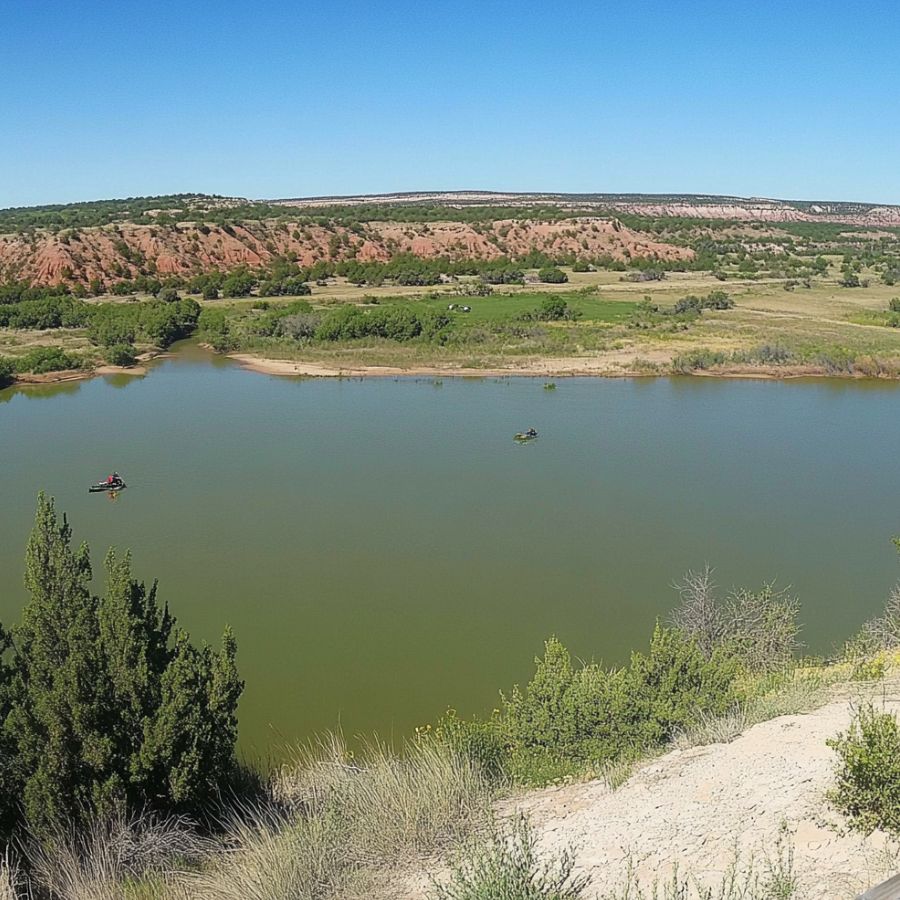
Lake Mackenzie is a man-made lake in Briscoe County, about 9 miles northwest of Silverton. The lake sits within Tule Creek Canyon, which flows into the Red River. This water reservoir serves nearby towns and offers beautiful views of the Texas landscape.
Platinum has been found in small amounts along the shores of Lake Mackenzie. The area features interesting gypsum deposits and unique sedimentary rock layers that formed millions of years ago. These geological features make the location special for mineral hunters.
Check the northern shoreline, where water levels change throughout the year. These fluctuations can expose new materials. The hills north of the lake also contain mineral deposits worth exploring.
Rocky outcrops around the lake sometimes reveal small platinum grains mixed with sand. Early morning searches after rainfall often yield the best results as the water helps wash away dirt and makes metallic minerals easier to spot.
Brazos River
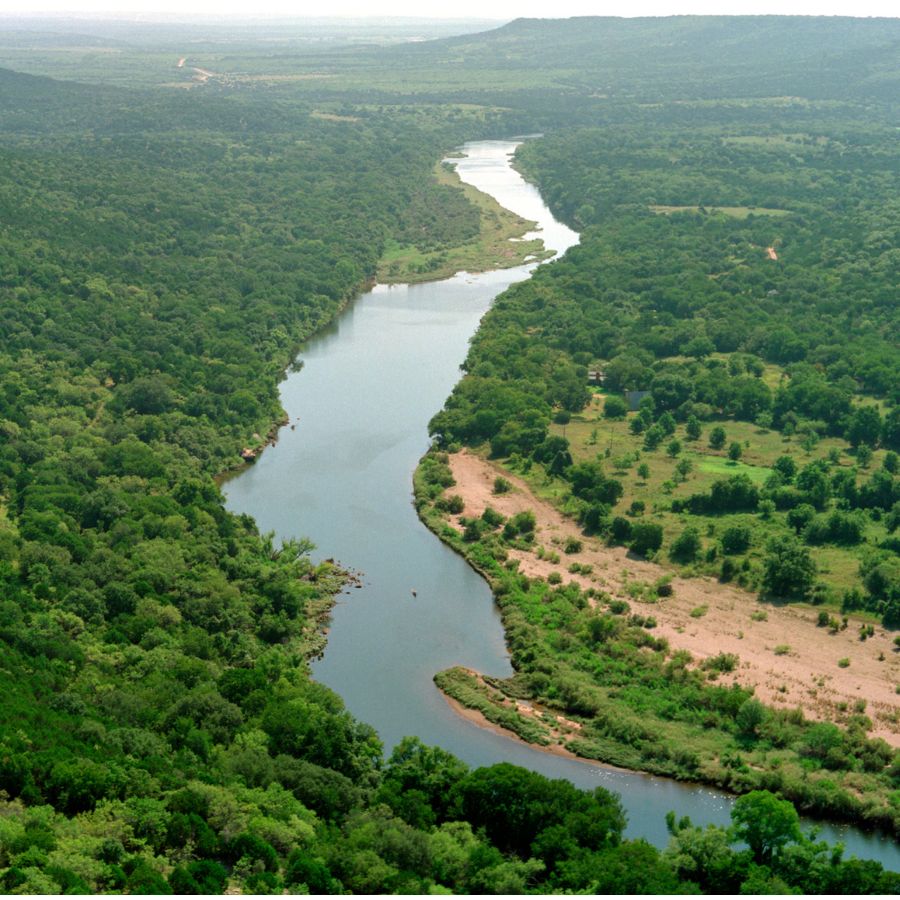
The Brazos River is a major waterway in Texas that stretches about 1,280 miles from New Mexico to the Gulf of Mexico. It flows through central Texas, creating diverse landscapes along its path.
Studies have shown that platinum group elements exist in certain sections of the Brazos River, making it potentially interesting for platinum hunters.
This river is special because of its rich sedimentary deposits built up over thousands of years. Scientists have specifically identified platinum traces in some of these sedimentary formations.
Your best chances for finding platinum are in areas where the river has cut through older rock layers, exposing the mineral-rich sediments. Look particularly at gravel bars and sandy deposits after rainfall.
Local rockhounds sometimes check around the Glen Rose and Waco areas where the river has created interesting geological features.
Terlingua
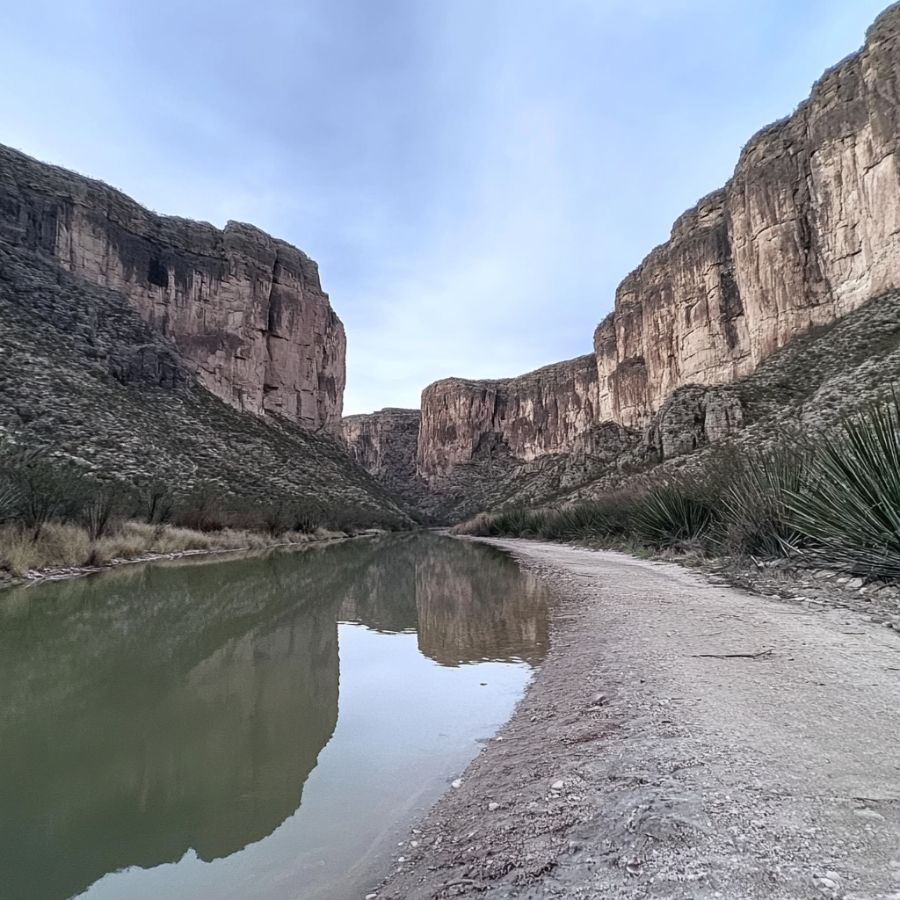
Terlingua is a small desert area in southwestern Brewster County, close to the Rio Grande and Mexico. This ghost town sits at the edge of Big Bend National Park and Big Bend Ranch State Park. The land rises between 2,559 and 3,215 feet above sea level.
Historically, Terlingua was famous for its cinnabar mines that produced mercury. The area’s rich geology formed through ancient volcanic activity, creating various rock types like rhyolites, basalts, and trachytes.
For platinum, the Chisos Mining Company site offers interesting possibilities. California Hill and Rainbow mines also attract explorers looking for minerals.
Terlingua also boasts unique minerals like terlinguaite that can’t be found in many other places. The mix of volcanic and sedimentary rocks makes this area special for gem and mineral collectors. During your search, you’ll enjoy the stunning desert landscape that draws tourists year-round.
Places Platinum has been found by County
After discussing our top picks, we wanted to discuss the other places on our list. Below is a list of the additional locations along with a breakdown of each place by county.
| County | Location |
| Crosby | Mount Blanco |
| Brewster | Stillwell Ranch |
| Mason | Garner Seaquist Ranch |
| Mason | Lindsey Ranch |
| Brewster | Alpine |
| Llano | Llano River |
| Williamson | Georgetown |
| Brown | Brownwood |
| Culberson | Van Horn Mountains |
| Hudspeth | Chihuahua Desert |
| Hill | Lake Whitney |
| Randall | Palo Duro Canyon |
| Val Verde | Devils River |
| Blanco | Pedernales River |
| Brewster | Chisos Mountains |
| Jeff Davis | Davis Mountains |

